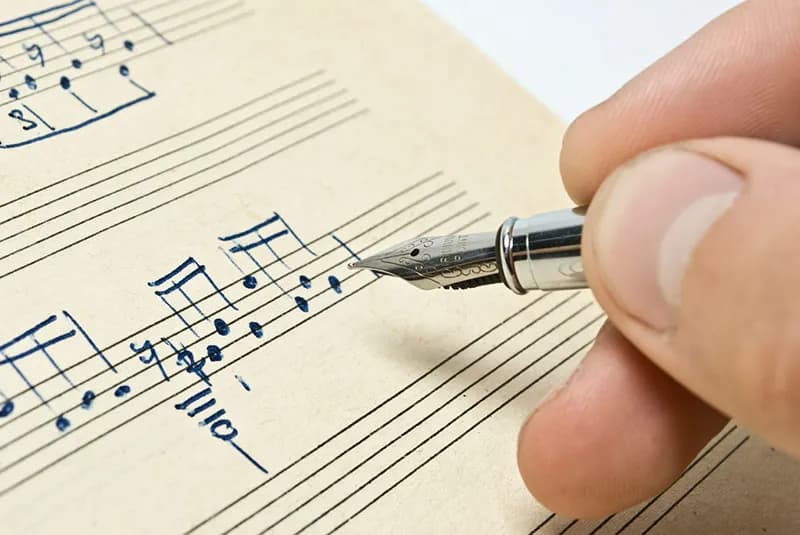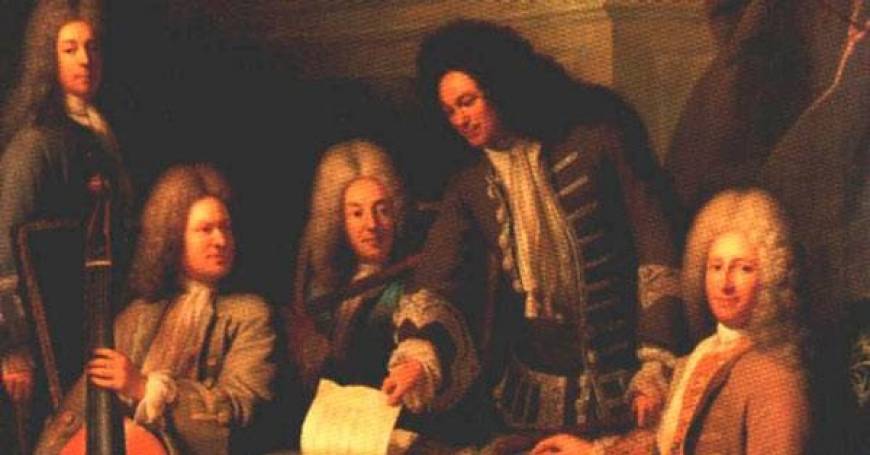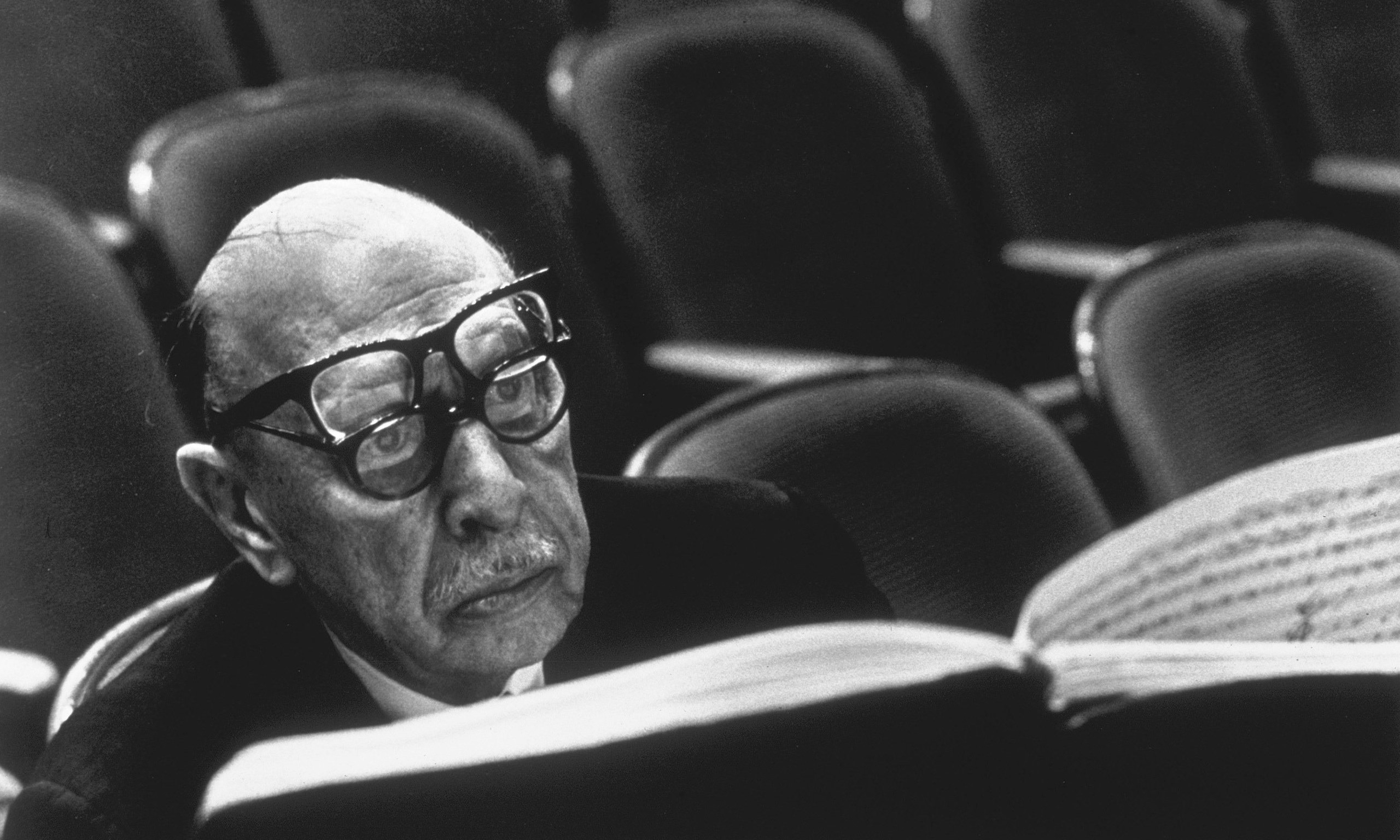There is an exclusivity to the approaches to composing music, as opposed to all other artistic forms. It is that music can be created through at least two different mediums. The one of the instrument or the one of the pen and paper. This fact cannot be observed in any other form of art, where the application of creative ideas goes through a unique medium. And thanks to this elementary duality of the approaches, very different results are often achieved — and some of the most interesting musical ideas can be reached through the combination of both. Perhaps some might say that one approach is more intellectual, whilst the other is more emotional. Regardless, throughout the history of music, usage of both, whether independently or together, has been observed over and over.

© The Tune Catcher
Perhaps we shall first explain both approaches. Composing by pen and paper means using blank sheet music and, most often, a pencil to write down the music directly on the staves. Just like someone would write words. Therefore, there is no instrument involved and the musician writes down the music that he hears in his head directly. This involves a great ear and musical mind and an ability to translate rhythm and pitch straight onto music paper.
Composing through the instrument brings an extra step in the creative process, and this is the translation of the ideas on the instrument before they are written down on paper. Through this approach the musician plays each sound he hears before he confirms their validity by noting them down. This involves being able to control the instrument well enough so the handling of it does not represent any physical challenges.
There are benefits to both approaches of course, as well as downsides to both too.

© aesdes.org
When composing at the instrument, one is directly in contact with the sound and its control. Depending on the instrument, there is an orientation towards melody (ie, violin, trumpet) or harmony (ie, piano, guitar). On the instrument, one can improvise and the ideas will flow in a natural way, sometimes unexpectedly. A downside to composing at the instrument is of course the technical limitations. One is also more akin to stay in a comfort zone of creative ideas, and less keen to explore the unknown and let the intellect take over.
The absence of an instrument promotes ideas which are not limited to technique and practice patterns. One can also ignore the supposed limitations of the instrument. The environment in which the composer immerses himself — when it is not a practice room or composing studio — can also provide constant inspiration. Messiaen was well-known for connecting with nature, and this led, of course, to his output of bird music, some of the most original musical material of the 20th century. Being away from the instrument demands an excellent understanding of the functioning of the instrument, as one of the downsides would be to create unrealistic music — once again, though, this approach can further expand the possibility of the instrument!
Olivier Messiaen: Catalogue d’oiseaux
Most composers find that the best option is often a combination of the two approaches, whether for the same work or for different ones. Composers are known for their specific composing methods, each unique to the artist. Bach, Mozart, Beethoven were well-known for improvising at the instrument, as well as finishing some of their scores whilst in transit. Many composers have been well-known for composing away from the instrument; whether it is Bach or Mozart, or later Shostakovich and Prokofiev — a lot of their music was written on the go. This often allows for the quality of creative ideas to be higher as more thought is given to it and less intuition, perhaps.

Igor Stravinsky © static-secure.guim.co.uk
Some composers were bound to adopt to one approach, such as Berlioz, who composed highly symphonic music, yet was never proficient in any instrument and much of his writing was done through pen and paper. Schoenberg had a very similar approach. If Satie, Debussy, and Ravel are well-known for having composed for the piano and transformed the approach one has to it, they all had limitations which at times prevented them from performing their own works. Some of the most important composers of opera and orchestral music were also quite limited on their instruments, such as Wagner and Rimsky-Korsakov. On the opposite scale, Stravinsky was almost always seen composing at the piano. Mozart or Schubert would balance both healthily.
Franz Liszt: Mazeppa (Transcendental Etude No.4)
There is no right or wrong in creative approaches, and if musicians are gifted by this plethora of options, composers must adopt their method on their experience and skills, as well as the potential demands of the piece. At times the mind dictates the approaches, at others it is the intuition.
Often, composers who started their musical life as performers have much difficulty detaching themselves from their instruments. Two similar examples, although with very different results are of course Chopin and Liszt. If Chopin composed most of his music exclusively for the piano, Liszt used it as a medium to compose for larger structures and could visualise it as a small orchestra. Rachmaninoff achieved similar results.
For more of the best in classical music, sign up for our E-Newsletter
